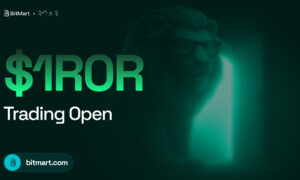Non-Fungible Tokens (NFTs) have aroused great interest worldwide, revolutionizing the way we perceive and exchange digital goods. However, this technology is not without its challenges and controversies. This article explores the main risks associated with NFTs, including environmental sustainability issues, cases of fraud and counterfeiting, and reactions and regulations from various players.
Environmental sustainability issues
One of the major criticisms levelled at NFTs concerns their environmental impact. The majority of NFTs are created and exchanged on blockchains using the Proof of Work (PoW) mechanism, such as Ethereum. This transaction validation process is very energy-intensive. Here are a few key points :
1. High energy consumption
The process of mining cryptocurrencies and minting NFTs requires significant amounts of electrical energy. For example, Ethereum’s annual energy consumption is comparable to that of some small countries.
The computers used for mining have to solve complex mathematical problems, consuming huge amounts of computing power and, consequently, energy.
2. Carbon footprint
The massive production of energy for NFT mining generates a significant carbon footprint. This raises a number of global environmental concerns.
Several studies estimate that the transaction of a single NFT can emit quantities of CO2 equivalent to those produced by hundreds of kilometers driven by car.
3. Sustainability initiatives
To counter these impacts, initiatives such as Ethereum 2.0 promise to move to a much less energy-intensive Proof of Stake (PoS) validation mechanism.
Other solutions include the development of greener blockchains and the use of renewable energies for mining.
Cases of NFT fraud and counterfeiting
NFTs, as unique digital representations of assets, are also vulnerable to fraud and counterfeiting. Common problems include :
1. Plagiarism and counterfeiting
Artists have reported that their works have been copied and offered for sale as NFTs without their consent. These acts of plagiarism and counterfeiting are facilitated by the relative anonymity of blockchain transactions outsourcing and offshoring.
Buyers can be deceived into purchasing counterfeit NFTs, thinking they are acquiring the work of a reputable artist.
2. Scams and rip-offs
The NFT market has seen the emergence of a number of fraudulent schemes in which swindlers create fake NFT projects to attract investment before disappearing with the funds (a phenomenon known as “rug pull”).
Fake auction sites and non-legitimate NFT platforms can also ensnare unsuspecting users.
3. Lack of clear regulation
The lack of clear, uniform regulation around NFTs makes it easier for scammers to operate. Users often lack legal recourse in the event of fraud.
Reaction and regulation of the NFT market
Faced with these challenges, several players have reacted in an attempt to regulate and structure the NFT market:
1. Actions by NFT platforms
Platforms such as OpenSea and Rarible have introduced measures to combat counterfeiting, such as stricter identity checks and reporting tools for plagiarized works.
Partnerships with authenticity verification services ensure that the works offered for sale are those of the declared artists.
2. Government regulations
Some countries are beginning to explore regulatory frameworks for NFTs to protect consumers and ensure market transparency. China, for example, recently announced strict rules to govern NFT transactions.
The European Union is working on legislative proposals to regulate digital assets, including NFTs, to prevent money laundering and fraud.
3. Reactions from the artistic and digital communities
Artistic communities are calling for more ethical and sustainable practices in the NFT sector, including the adoption of green blockchains and respect for creators’ rights.
Organizations and collectives are forming to educate artists and buyers about good practices and the risks associated with NFTs.
NFTs represent a major innovation in the field of digital goods, but they are not without their risks and controversies. Environmental impact, fraud and counterfeiting, and the need for appropriate regulations are crucial issues to address. As technology evolves, awareness and concerted action are needed to create a sustainable and secure NFT ecosystem.



































